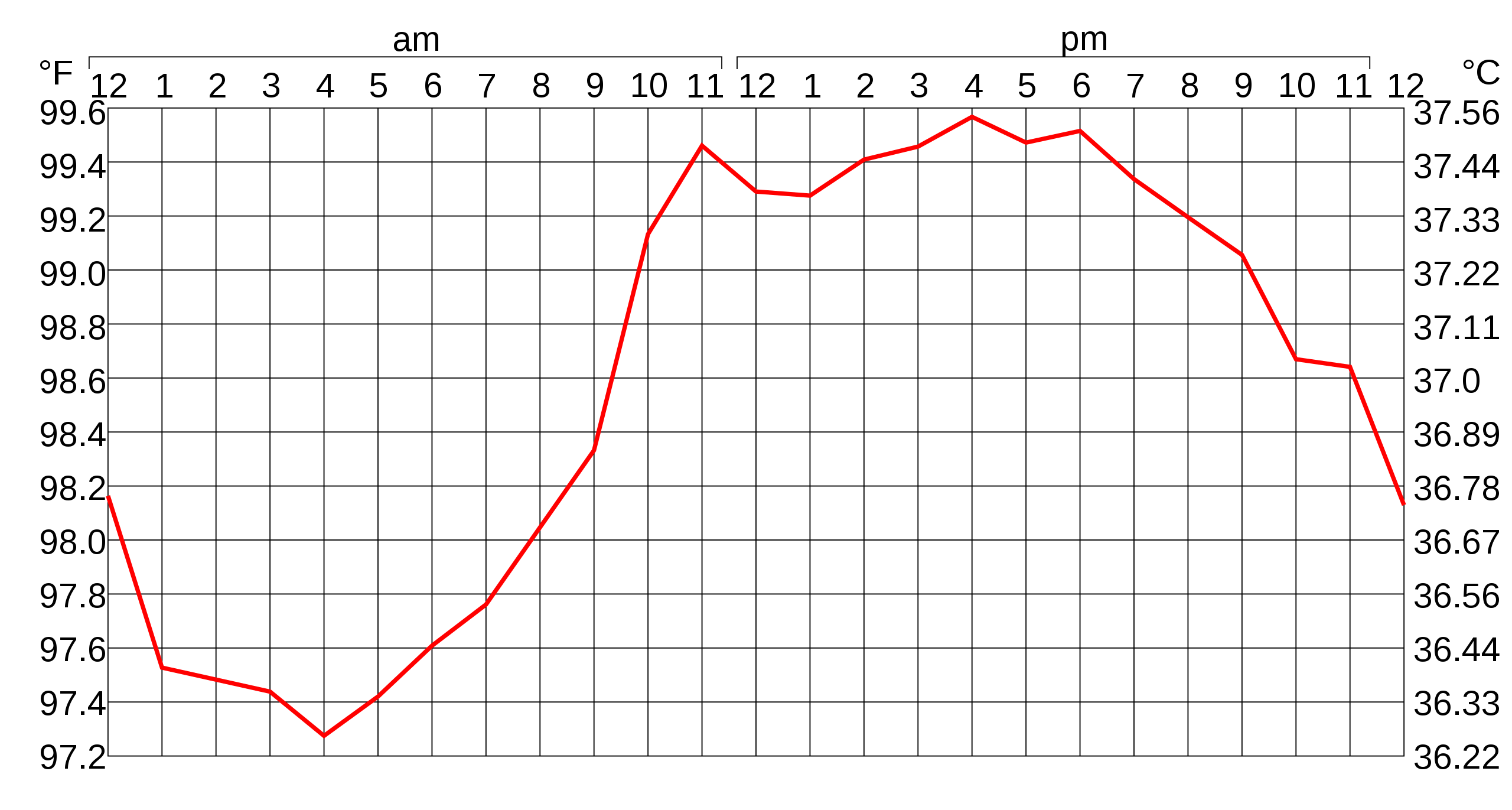About temperature measurement
Normal Body Temperature varies
About temperature measurement
Normal Body Temperature varies
Normal body temperature (normothermia, euthermia) is the typical temperature range found in humans. The normal body temperature range is typically stated as 36.5 – 37°C. The body temperature varies. It depends on gender, age, time of day, exertion level, health status (such as illness and menstruation), what part of the body the measurement is taken at, state of consciousness (waking, sleeping, sedated), and emotions.
Body temperature is kept in the normal range by thermoregulation, in which adjustment of temperature is triggered by the central nervous system. Temperature control (thermoregulation) is part of a homeostatic mechanism that keeps the organism at optimum operating temperature, as the temperature affects the rate of chemical reactions. In humans, the average internal temperature is 37.0 °C (98.6 °F), though it varies around this point by 0.5° to 1 °C. However, no person always has exactly the same temperature at every moment of the day. Temperatures cycle regularly up and down through the day, as controlled by the person's circadian rhythm. The lowest temperature occurs about two hours before the person normally wakes up. Additionally, temperatures change according to activities and external factors.

Non-Contact Thermometer
Rossmax HC700 BT
Rossmax new Telephoto thermometer provides a consistent and larger distance (within 10 cm) temperature measurement without skin contact. The contactless telephoto thermometer has been tested in leading clinics worldwide according to international standards. With this professional device, you can measure the body temperature of adults and children in a matter of seconds at the temple without touching the child or person.
#checkhealthathome
Body temperature varies throughout the day
In addition to varying throughout the day, normal body temperature may also differ as much as 0.5 °C (0.9 °F) from one day to the next, so that the highest or lowest temperatures on one day will not always exactly match the highest or lowest temperatures on the next day.
Normal human body temperature varies slightly from person to person and by the time of day. Consequently, each type of measurement has a range of normal temperatures. The range for normal human body temperatures, taken orally, is 36.8±0.5 °C (98.2±0.9 °F). This means that any oral temperature between 36.3 and 37.3 °C (97.3 and 99.1 °F) is likely to be normal. The normal human body temperature is often stated as 36.5–37.5 °C (97.7–99.5 °F). In adults a review of the literature has found a wider range of 33.2–38.2 °C (91.8–100.8 °F) for normal temperatures, depending on the gender and location measured.

Reported values vary depending on how it is measured: oral (under the tongue): 36.8±0.4 °C (98.2±0.72 °F), internal (rectal, vaginal): 37.0 °C (98.6 °F). A rectal or vaginal measurement taken directly inside the body cavity is typically slightly higher than oral measurement, and oral measurement is somewhat higher than skin measurement. Other places, such as under the arm or in the ear, produce different typical temperatures. While some people think of these averages as representing normal or ideal measurements, a wide range of temperatures has been found in healthy people. The body temperature of a healthy person varies during the day by about 0.5 °C (0.9 °F) with lower temperatures in the morning and higher temperatures in the late afternoon and evening, as the body's needs and activities change. Other circumstances also affect the body's temperature. The core body temperature of an individual tends to have the lowest value in the second half of the sleep cycle; the lowest point, called the nadir, is one of the primary markers for circadian rhythms. The body temperature also changes when a person is hungry, sleepy, sick, or cold.
With increased age, both average body temperature and the amount of daily variability in the body temperature tend to decrease. Elderly patients may have a decreased ability to generate body heat during a fever, so even a somewhat elevated temperature can indicate a serious underlying cause in geriatrics. One study suggested that the average body temperature has also decreased since the 1850s. The study's authors believe the most likely explanation for the change is a reduction in inflammation at the population level due to decreased chronic infections and improved hygiene.
Types of thermometers
Keep track of your body temperature
It is of great medical importance to measure body temperature. The reason is that a number of diseases are accompanied by characteristic changes in body temperature. Likewise, the course of certain diseases can be monitored by measuring body temperature, and the efficiency of a treatment initiated can be evaluated by the physician. Fever is a reaction to disease-specific stimuli, where the set point of the temperature control centre is varied to promote the body's defenses against the disease process.
Fever is the most common form of pathological (disease-related) elevation on body temperature. Fever is a reaction to disease-specific stimuli, where the set point of the temperature control centre is varied to promote the body's defenses against the disease process. Fever is the most common form of pathological (disease- related) elevation on body temperature.

Doctors consider a fever to be a body temperature that reaches or exceeds 38°C (100.4°F). Other symptoms include:
-
headache
-
irritability
-
muscle aches
-
sweating
-
chills
-
weakness




